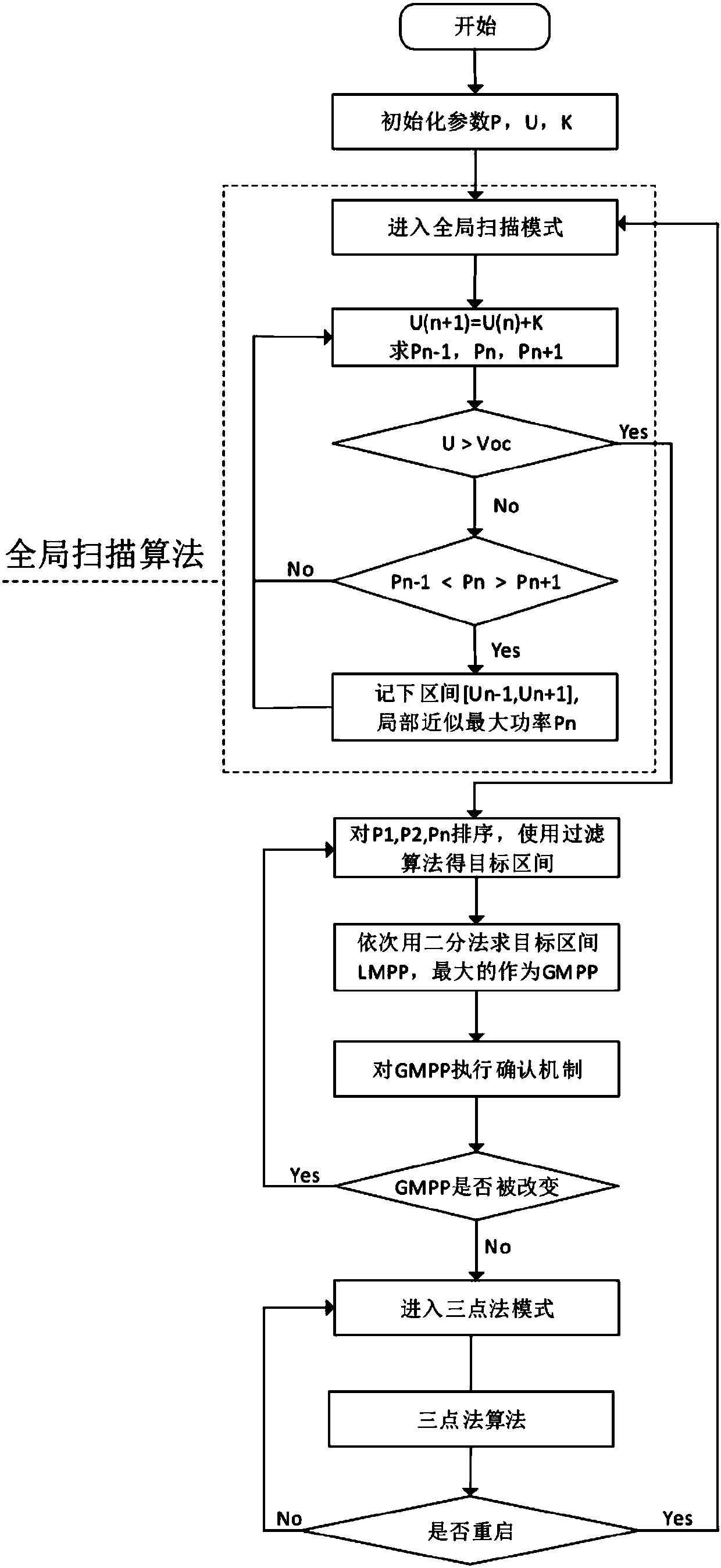Multi-peak-value MPPT algorithm
A multi-peak and algorithmic technology, which is applied in photovoltaic power generation, instruments, and electric variable adjustment, can solve the problems of difficult expansion, slow speed, and high hardware requirements, so as to adapt to the environment of light and temperature changes and reduce the probability of misjudgment , Improve the effect of system performance
- Summary
- Abstract
- Description
- Claims
- Application Information
AI Technical Summary
Problems solved by technology
Method used
Image
Examples
Embodiment Construction
[0039] The specific implementation of the present invention will be further described below in conjunction with the accompanying drawings and examples, but the implementation and protection of the present invention are not limited thereto. achieved or understood by prior art.
[0040] The flow chart of the example algorithm is as follows figure 1 As shown, in order to improve the maximum power point tracking speed of the photovoltaic system, make it quickly adapt to environmental changes, avoid the algorithm from falling into local optimum, reduce the misjudgment rate of the algorithm, reduce the complexity of the algorithm and the implementation cost, the algorithm uses a large step The long global scanning algorithm quickly locates each peak interval, and then uses the filtering algorithm to reduce the peak interval, uses the dichotomy method to find the local peak of each interval in the filtered 1-5 peak intervals, and then takes its maximum value as the global maximum pow...
PUM
 Login to View More
Login to View More Abstract
Description
Claims
Application Information
 Login to View More
Login to View More - R&D
- Intellectual Property
- Life Sciences
- Materials
- Tech Scout
- Unparalleled Data Quality
- Higher Quality Content
- 60% Fewer Hallucinations
Browse by: Latest US Patents, China's latest patents, Technical Efficacy Thesaurus, Application Domain, Technology Topic, Popular Technical Reports.
© 2025 PatSnap. All rights reserved.Legal|Privacy policy|Modern Slavery Act Transparency Statement|Sitemap|About US| Contact US: help@patsnap.com



